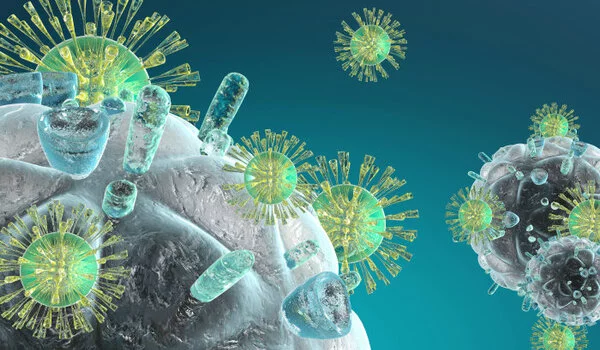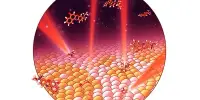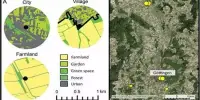During the early stages of infection, hosts mount an innate immune response, which includes defense mechanisms that protect them from invading pathogens in an antigen-independent manner. This is the first and most rapid immune response launched against a variety of microorganisms. The innate immune system can tell the difference between self and foreign proteins and reacts accordingly.
According to a new study led by Andrés Finzi, Université de Montréal professor and researcher at the CHUM Research Centre, the type of virus used as a model to study the efficacy of non-neutralizing antibodies against the virus responsible for AIDS plays an important role.
Published in Cell Reports, the study shows for the first time in humanized mice that the expression of the viral protein Vpu is essential in allowing infected cells to evade the elimination mechanism known as antibody-dependent cell-mediated cytotoxicity (ADCC).
This mechanism, which is well documented in the scientific literature, is used by non-neutralizing antibodies, among other things, to eliminate virus-infected cells. Many laboratories are studying the generation of this same category of antibodies to prevent infection in order to develop a vaccine against the human immunodeficiency virus, or HIV-1.
We observed that the modified HIV-1 virus used in certain laboratory experiments does not express Vpu. However, in the naturally occurring virus, this protein actually plays the role of a bodyguard for the infected cell. Once expressed, it allows it to replicate itself and helps it protect itself by flying under the immune system’s radar.
Andrés Finzi
Millions of people today are infected with HIV-1 and have non-neutralizing antibodies. Despite this, the disease has not been eradicated. Why don’t the antibodies appear to work if they are so effective? This conundrum piqued the interest of UdeM doctoral student Jérémie Prévost, the study’s first author and a team member under Finzi, the study’s lead author and a Canada Research Chair in Retroviral Entry.
Fatal lack of expression
“We observed that the modified HIV-1 virus used in certain laboratory experiments does not express Vpu,” said Finzi. “However, in the naturally occurring virus, this protein actually plays the role of a bodyguard for the infected cell. Once expressed, it allows it to replicate itself and helps it protect itself by flying under the immune system’s radar.”
In fact, the Prévost-led study demonstrates that by expressing the Vpu protein in infected cells, non-neutralizing antibodies have a much more difficult time recognizing these cells in vivo. As a result, the latter evade the ADCC response.
Experiments at Yale University School of Medicine by Finzi’s collaborator Priti Kumar in humanized mice given non-neutralizing antibodies confirmed this observation. Only animals infected with a virus in which Vpu was not expressed saw their viral load decrease, as opposed to those infected with a naturally occurring virus.

Doors closed to antibodies
This observation echoes previous research work conducted by the team. In 2013, Andrés Finzi’s team had already shown that infected cells are protected from the ADCC response because the viral envelope remains closed under the effect of Vpu and the protein Nef, a second bodyguard. Fully sheltered, the infected cell cannot be found by antibodies in the vicinity.
“In the laboratory, if Vpu is not expressed in the virus that you use, the envelope of the infected cell will open up,” Finzi explained. “It will be attacked by antibodies if it is not protected. This may explain some unexpected results reported with non-neutralizing antibodies. In real life, HIV is constantly on guard thanks to its two bodyguards, Vpu and Nef.”
The researcher and his colleagues believe that the valuable information provided by this study should be considered in the development of future HIV-1 vaccines and eradication strategies. According to the World Health Organization, by the end of 2021, more than 38 million people would have been infected with the AIDS virus.














